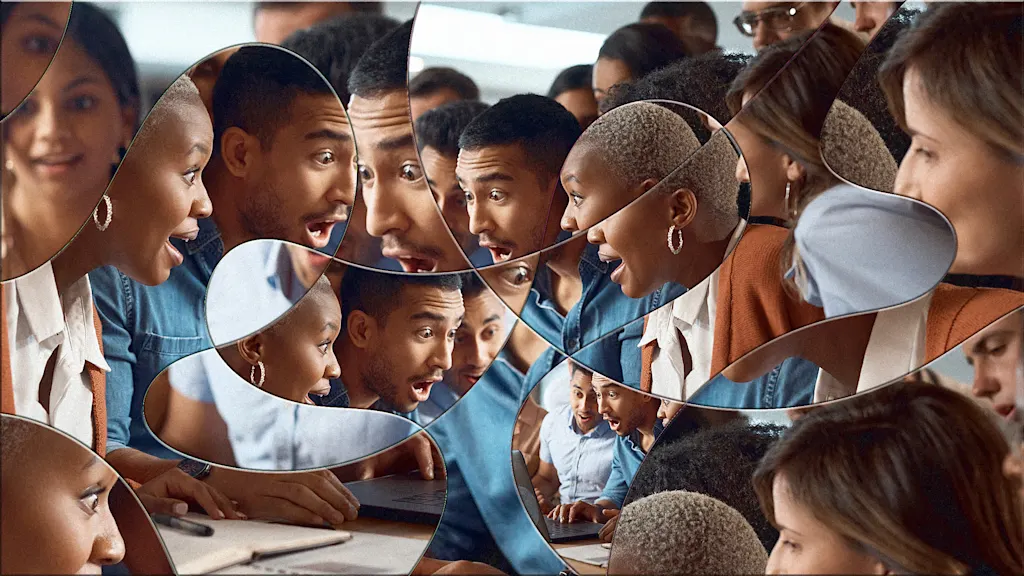
I’ll never forget the first time I saw the power of a group gasp. Years ago, at a Baltimore Ravens game, a film I’d helped create played across the stadium’s newly installed LED screens. In the climactic moment (a close-up shot as the kicker’s foot struck the ball) the entire crowd seemed to freeze, breath held, before erupting in a wave of energy that swept the stands. That’s because the shot was perfectly timed with the real kick-off that started the game. Picture 70,000 people rising to their feet in unison, their collective gasp creating a moment of pure electricity.
That wasn’t chance. It was the result of designing an experience where story, environment, and audience collided to spark a visceral, shared response.
This “group gasp”, that instant of collective, visceral awe, has become the holy grail of modern brand experience. In a fragmented world where people crave connection, brands aren’t just competing for attention. They’re competing to orchestrate shared emotional resonance.
From spectacle to lasting impact
The roots of immersive brand experiences run deep. In the late 1990s, with the internet booming and new competitors emerging thick and fast, we worked with IBM to use custom technology (think infrared sensor projections, interactive exhibits, and flexible architecture) to shift brand perception from staid to innovative. It wasn’t about showing off gadgets; it was about shifting from a one-way monologue to the customer to a democratic conversation with them, entirely reimagining the relationship between people and brand.
Subscribe to the Design newsletter.The latest innovations in design brought to you every weekday
Privacy Policy
|
Fast Company Newsletters
Today, environments like Sphere in Las Vegas or New York’s Oculus Transit Hub blend architecture, storytelling, and cutting-edge tech to create collective awe. Outside these venues, brands are playing with physical space to show up in evermore seamless, smart, and impactful ways. HBO and Giant Spoon’s Westworld activation at SXSW set a new standard in experiential, inviting people “into the show” by recreating its Sweetwater location, deep in the Austin desert.
But here’s the real shift: Experiences no longer end when the audience walks away. Social media amplifies a single moment of wonder into a global phenomenon, extending impact for weeks or months. The gasp becomes evergreen content.
Designing for shared emotion
Technology may set the stage, but it doesn’t guarantee resonance. The magic lies in emotional choreography; guiding audiences through intimacy, tension, and release. Like a great film score, the best experiences ebb and flow rather than hammering at peak volume.
Different brands call for different emotional tones. For one, it might be joy and togetherness; for another, reverence and hope. There’s no universal formula . . . what matters is intention.
The most successful moments also feel effortless. They don’t overwhelm with every technical trick, but instead use restraint so each detail serves the story. Shareability isn’t accidental, it’s designed into the experience. Yet it works best when it feels authentic, not engineered.
The new marketing imperative
A broader cultural shift in consumer spending, aka the Experience Economy, is nothing new. Since the 1990s, we’ve witnessed more people prioritizing experiences over material possessions. Marketing spend has taken a while to play catch up, but with a stated 74% of Fortune 1000 marketers planning to increase their spend on experiential marketing over this year, ad spend is now markedly shifting. Executives increasingly recognize that these moments forge emotional bonds that traditional campaigns can’t match.
advertisement
When people share a communal, in-person experience, the emotional response is amplified. The brand becomes embedded not just in an individual’s memory, but in a collective one. In an era of fleeting attention, belonging is rare, and therefore valuable.
But as pop-ups and activations proliferate, not every “immersive” event cuts through. The brands that win will resist spectacle for spectacle’s sake and focus instead on stirring genuine collective emotion.
Surprise: The spark behind the gasp
At the heart of every group gasp lies surprise, moments that subvert expectation. Sometimes that’s high-production spectacle, but just as often it’s a small, human detail: a perfectly timed music cue, a flash of humor in a serious setting, or unexpected use of lighting.
Memorable moments don’t require blockbuster budgets. They require empathy, timing, and the courage to be unpredictable. Commuters weren’t prepared to stumble into the surreal world of Severance in Grand Central Station, and adding the show’s cast to its severed floor made Apple TV’s experience even more unforgettable.
The thought, “I didn’t expect that” is the beginning of brand magic, and when people feel compelled to share it, the impact multiplies.
The road ahead for immersive storytelling
We’re no longer just making content; we’re designing experiences. Content sits in a frame, while experiences unfold in space and time. This requires thinking like architects or choreographers, not just advertisers, designing for attention in motion across multiple tempos and entry points. Most importantly, it means anchoring every decision in emotion.
AI is already transforming how brands design for emotion, from predictive analytics that anticipate audience reactions to generative tools that create hyper personalized experiences. But the real power lies in combining these tools with human empathy to craft moments that feel both innovative and deeply personal. At a time when trust is fragile, immersive experiences offer brands something rare: the chance to build emotional connections that pull people back in again and again.
So, the real question for brands is simple: Are you willing to design for the gasp? In an age of distraction, the ability to elicit shared wonder may be the most valuable strategy of all.